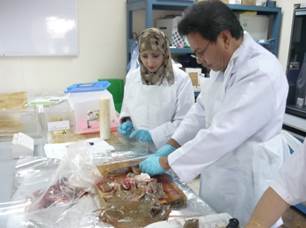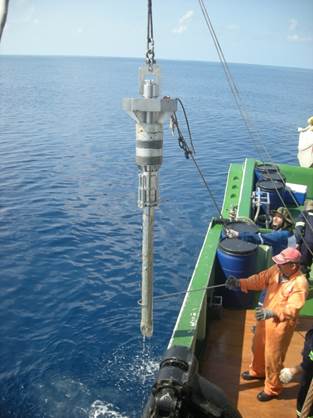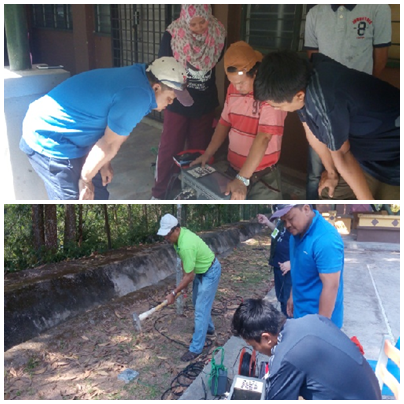WASTE TECHNOLOGY & ENVIRONMENT
- WATER & NATURAL RESOURCES
-
Water Resources Evaluation and Environment
Natural resources refer to the sustainable utilization of major natural resources such as land, water and minerals. Water is a precondition for human, animal and plant life, as well as a necessary resource for the economic activities. In many parts of the world, surface and groundwater resources are at risk because of indiscriminate use, rapidly growing populations, increasing agricultural demands, and threat of pollution in the surrounding areas. These risks are often compounded by a lack of understanding about local conditions governing the occurrence, distribution and management of surface and groundwater resources at large. Such hydrological problems in sustainable water resources development and management can be investigated and mostly solved by using nuclear-isotope techniques (environmental and radioisotope tracers). Being considered as complementary and supplementary to conventional approaches, isotopic information is usually combined with other hydrological or geophysical data (conventional techniques such as by using geo-electrical resistivity) to produce a comprehensive understanding of the regional scale of an underground (groundwater) or surface water system as well as provide a scientifically sound basis and excellent results for better management decisions. In certain cases, nuclear techniques are considered as one of the imperative tools available and favorable to the hydrologist and water-resource engineer to help unravel the intricacies inherent in our water-resource system. The interest in this field of studies is continuously growing as indicated by the increasing number of request by several local water related authorities in the country.
In Malaysia, the effort to promote the use of isotope techniques in water resource and hydrology as well as environmental management sectors is championed by Malaysian Nuclear Agency (Nuclear Malaysia). Nuclear Malaysia as the sole nuclear research institute in the country plays a major role to encourage the peaceful uses of isotope technology through aggressive joint-venture research and development (R&D) activities, consultancy works and services offered to various stakeholders or end-users particularly government related agencies and private sectors including universities.
Among the main issues that can be tackled with the use of nuclear technology in Water Resource and Environmental Management field in terms of providing unique and important information to the concerned authorities are as follows:
- Assessment of groundwater resource potential for water supply (i.e., determine its source and origin, age of water, water quality and flow dynamics such as recharge rate, mixing behavior, movement and direction)
- Groundwater salinization (salt water intrusion)
- Surface water / groundwater pollution (i.e., sanitary landfill, municipal / industrial discharges and fish-farming)
- Interconnection of different water-bodies (sea, river, groundwater, spring, rainwater, lake/ pond/ pool, etc)
- Tracing the source and migration of pollution (environmental forensic study)
- Water balance (storage, infiltration rate, flow characteristics, evapotranspiration)
- Water transit time, dispersion and discharge measurements (i.e., river and irrigation canal systems)
- Identification of leakages and seepages related problems in natural or man-made structures (i.e., dam, canal and lakes)
List of some current and past research projects undertaken:
- IAEA/RCA- RAS7022 Project: Applying Isotope Techniques to Investigate Groundwater Dynamics and Recharge Rate for Sustainable Groundwater Resource Management.
- Assessment of Groundwater Recharge Using Environmental Isotopes & In-Direct Conventional Approaches to support Groundwater management in the North Kelantan River Basin (NKRB).
- TC Project on Study the Impact of Climate Change on Water Resources by Using Integrated Isotope, Hydro-chemical and Conventional Methods. (MAL2012007).
- Protection of Drinking Water Sources Abstraction, Real Time Conditioning & Treatment (LRGS project)
- IAEA /RCA -RAS7024 Project: Supporting Nuclear and Isotopic Techniques to Assess Climate Change Impact for Sustainable Marine Ecosystem Management
- Science fund Project (03-03-01-SF0205): Application of Isotopes Techniques in identifying and quantifying the groundwater resources for sustainable groundwater resources management
- Science fund Project (03-03-01-SF0255): Assessment of the climate variability in coastal environment area using isotopic & nuclear technique: focusing on sediment & coral records
- GNIP (Global Network Isotope Precipitation)
- Study of discharge measurements using radioisotope and conventional methods in Sg. Weng, Kedah (Comparative analysis of discharge data from 2003-2005)
- A Preliminary Study of Isotope Hydrology in Paya Indah Wetlands Areas (PIW)
- Assessment of trends in freshwater quality using environmental isotopes and chemical techniques for improved resource management in Langkawi Island, Malaysia
- IAEA/RCA–RAS8093 Project: Use of isotopes in dam safety & dam sustainability studies

The attached figures show some of the available field and laboratory equipment use by the responsible assigned group (Environmental Tracer Application Group, E-TAG) at Nuclear Malaysia to conduct R&D activities, consultancy works and services to various stakeholders or end-users in the scope of water resource and environmental evaluation.



Field activities
-
Natural Resources Exploration
Non Conventional Approach
The Non Conventional Approach involves the estimation of the existing of thorium from the mining industries and the amang factories which have the thorium based material such as Monazite, Xenotime, etc. Monazite contains up to 7 percent of thorium whereas xenotime contains less than 1 percent thorium. The information on thorium minerals will be collected from the visits to the active mining companies and amang factories (Figures 1 and 2). The estimation of current existing thorium can be calculated based on the existing amang and thorium based mineral stocks. Although these activities are expected to be completed by end of 2015, the information on the mineral stocks will be updated monthly until 2018.Conventional Approach
The Conventional Approach will be dealing with the survey to define the natural thorium resources from rocks, alluvium, etc. It will be expected to be accomplishing between 2 - 3 years. Based on results from uranium exploration carried out by the Minerals and Geoscience Department Malaysia during the period 1984 to 1995, areas with elevated levels of thorium have been identified within Bukit Keluang, Bukit Damar, Sungai Perdak, Benom-Benta igneous complex, Bukit Tinggi granite in Pahang; Nal granite - Bakar granite - Terekak granite and Krai igneous complex in Kelantan. The investigation will involve the ground geological mapping, ground geophysical investigation, radiometric surveys, trenching and borehole construction in the potential areas.
- ENVIRONMENTAL IMPACT ASSESSMENT
-
Marine Radioactivity Assessment
As more than 70% of the earth surface is made up of ocean, marine environment become major recipient of various types of radionuclides that were released from a multiplicity of sources, both planned and accidental. The main contributors to the general levels of anthropogenic radionuclides found in marine waters are the fallout from atmospheric nuclear weapons tests (conducted mainly in the 1950s and 1960s), the Chernobyl and Fukushima nuclear accidents, discharges of radionuclides from nuclear plant installations and reprocessing of nuclear fuel, dumping of nuclear wastes into the world's oceans and seas, nuclear submarine accidents, contributions from nuclear weapons tests sites, loss of nuclear weapons and radioactive sources, and satellite burnup. Three anthropogenic radionuclides i.e. Sr-90, Cs-137 and Pu-239+240 are the most abundant and radiologically typical for beta-, gamma- and alpha-emitters. Their present in the marine environment can lead to the highest radiation doses to humans and marine biota. Other radionuclides of interest in the marine environment are H-3, C-14 and Am-241 which could still be detected and measured. Short half-lived radionuclides I-131 and Cs-134 can be very important immerdiately following a nuclear accident and are measured together with the other radionuclides. Apart from anthropogenic radionuclides, natural radioactivities from U-238, Th-232 and U-235 decay siries and in addition K-40, are also measured in marine samples. These radionuclides may directly supply to the marine environment from the atmosphere through dry and wet deposition; and indirectly as runoff from rivers or land.
In 2003, Atomic Energy Licensing Board engaged Nuclear Malaysia for a comprehensive marine monitoring programme to develope national marine radioacivity database. The project ended in 2007 where the radiactivity levels of different radionuclides in seawater, marine sediment, selected marine biota around the country were compiled and documented. The radioactivity levels in Malaysian marine environment were continously monitored using government budget obtained from the Ministry of Science, Technology and Innovation under Scifund Research Grants. Scientific cruises were also organised to obtained comprehensive data on the radioactivity levels in seawater and marine sediment only from coastal but also from off-shore areas.
Following the Fukushima Daiichi nuclear power plant accident in March 2011 which resulted in the largest ever discharge of artificial radioactivity to the marine environments of the Asia-Pacific region, the issue of radioactive contamination received considerable attention. In Malaysian, the radioactivity levels marine water and marine biota were monitored at five monitoring stations located in Perhentian Island, Tioman Island, Labuan Island, Turtle Islands and Bintulu Port where the measurement results showed no additional input of Cs-134 and Cs-137 into our national marine environment. The radioactivity measurement made on marine biota would ensure that the marine fish are free from any radioactive contaminant and save to eat.
Preparing of marine biota samples for radioactivity measurement

Sampling of seawater and and sediment for marine radioactivity assessmentList of Research Topic Related to the Marine Radioactivity Assessment
- Monitoring of natural and anthropogenic radionuclides (Ra-226, Ra-228, Po-210/Pb-210, U-234, U-238, Th-228, Th-230 Th-232, Am-241, Cm-243, Cs-137, and Pu-239+240) in sediment, seawater (dissolved and suspended) and biota (fish, coral reef, bivalve and shell and abiota (plankton, sea grass, seaweed etc.).
- Reconstruction of marine pollution geo-chronology using U-Th decay series.
- Sedimentation rate, inventory, flux and Kd of radioactive contaminant.
- Behavior, fate and transport of radioactive contaminant/non-radioactive contaminant.
- Uptake and bioaccumulation of radionuclides in marine biota and abiota.
- Preliminary study on radiological assessment in marine environment.
- Characterization of transfer of radionuclide at mangrove ecosystem using radiotracer technique.
- Relationship of climate change and marine carbon content.
- Applications of radiotracer technologies to seafood safety assessment.
Resent Research Projects Related to Marine Radioactivity Assessment
- Assessment of Climate Variability in Coastal Environment Area Using Isotopic & Nuclear Techniques: Focusing on Sediment & Coral Records (MOSTI ScFund- 03-03-01-SF 0255): 2014 – 2017.
- Supporting Nuclear and Isotopic Techniques to Assess Climate Change Impact for Sustainable Marine Ecosystem Management (IAEA/RCA RAS/7/024): 2012 – 2015.
- Marine Benchmark Study on The Possible Impact of The Fukushima Radioactive Releases in The Asia-Pacific Region (IAEA/RCA RAS/7/021): 2011 – 2015.
- The Extent and Impact of the Releases of Radioactivity from the Fukushima Daiichi Nuclear Power Plant into Malaysian Marine Environment (MOSTI SciFund: 04-03-01-SF0128): 2011–2014.
- Harmonizing Nuclear and Isotopic Techniques for Marine Pollution Management at the Regional Level (IAEA/RCA RAS/7/019): 2009 – 2012.
- Establishing a Benchmark for Assessing the Radiological Impact of Nuclear Power Activities on the Marine Environment in the Asia Pacific Region (IAEA/RCA RAS/7/016): 2007 – 2011.
- Distribution of Radioactive Contaminants Cs-137, Pu-239+240 and Am-241 in Seawater and Sediments of Sulu-Sulawesi Sea (EPSP’09) NM-R&D-10-09: 2009 – 2010.
- Establishment of Anthropogenic Radioactivity Concentration in Peninsular Malaysia Marine Environment (EEZ), (MOSTI SciFund- 04-03-01-SF0020): 2007 – 2010.
- Application of Nuclear Techniques to Study Bioaccumulation and Transfer Factor for Marine Biota (MOSTI SciFund- 04-03-01-SF0022): 2007 – 2009.
-
Atmospheric and Terrestrial
The studies on atmosphere and terrestrial environment have been essential because it is related to the protection/preservation of environment and health of living organisms including humans. Because of industrialization and urbanization, pollutions of atmosphere and terrestrial environment have been major concerns in many countries across globe. In Malaysia, various research projects related to atmospheric and terrestrial environmental studies have been conducted and many new projects are in progress. Among these projects are those directly involving the assessment of pollution level in air and terrestrial environmental samples. Various analytical techniques were utilized to obtain large volume of data such as radionuclides, toxic and trace elements, and organic pollutants. Samples were collected from various locations in the country and the data would provide information on distribution and identifications of sources of contaminants in the atmospheric and terrestrial environment. Future research would include the biogeochemistry of inorganic and organic pollutants as well as modeling on the dispersion of these pollutants in atmospheric and terrestrial environments.
List of research topic related to the marine environment;
- Monitoring of natural and anthropogenic radioactive (radionuclide Ra-226, Ra-228, Po-210/Pb-210, U-234, U-238, Th-228, Th-230 Th-232, Am-241, Cm-243, Cs-137, and Pu-239+240) in soil, rock, food, flora (crop, lichen, moss, plant and fruits) and fauna
- Monitoring of toxic and heavy metal pollution in soil, rock, food, flora (crop, lichen, moss, plant and fruits) and fauna
- Uptake and bioaccumulation of radionuclide and toxic element in flora and fauna
- Transfer and migration of radioactive/non-radioactive elements, (eg., movement of tritium)
- Monitoring of radioactive and non-radioactive in air particulate (PM10 and PM2.5)
- Monitoring of radioactive and non-radioactive in rain water
- Modeling of radionuclide/air pollution transport including long-ranged/ trans-boundary transport
List of research project:
- Utilization of Research Reactor – Multielement Analysis In Rice Grains By Instrumental Neutron Activation Analysis (FNCA project) – Project Members: Md Suhaimi Elias, Nazaratul Ashifa Abdullah Salim and Dr Wee Boon Siong
- Investigation on Mosses and Lichen as bio-indicator for air monitoring using Neutron Activation Analysis and Inductive Couple Plasma Mass Spetrometry – Project Leader: Shakirah Shukor
- IAEA/RCA/RAS/8/082: Isotopic and Related Techniques to Assess Air Pollution (1999 -2002) - Project leader: Dr Abdul Khalik Wood
- IAEA/RCA/RAS/7/013: Improved Information of Urban Air Quality Management in The RCA Region (2003-2006) - Project leader: Dr Mohd Suhaimi Hamzah
- IAEA/RCA/RAS/7/015: Characterization and Source Identification of Particulate Air Pollution in the Asian Region (2007-2010) - Project leader: Dr Mohd Suhaimi Hamzah
- IAEA/RCA/RAS/7/023: Supporting Sustainable Air Pollution Monitoring Using Nuclear Analytical Technology (2012-2015) - Project leader: Pn Shamsiah Abdul Rahman -
- IAEA/RCA/RAS/7/029: Assessing the Impact of Urban Air Particulate Matter on Air Quality (2016 -2018) - Project leader: Pn Shamsiah Abdul Rahman
- RCARO project: Air Quality & Environmental Impact Assessment of Industrial Activities in Klang Valley, Kuala Lumpur (2018-2020) - Project leader: Pn Shamsiah Abdul Rahman
-
Slope Instability, Landslide And Foundation Settlement Risk Assessment
Slope failures, landslide and settlement of foundation (subsidence) typically do not occur spontaneously. There is a scientific reason for each failure and usually failures do not occur without warning if such sensitive areas are well monitored. In this context, the task of predicting the exact failure is difficult, as the point of ultimate failure is dependent on a number of factors ranging from geologic structures of the area to land use change. The best documented sign of impending failure is monitoring the increase in the rate of ground movement of any unstable / potentially risk slope area (localized zone) and how they change with time.
It is well known that water is one of the major factors in slope instability that can act to soften the soils and allows the slope failure or foundation to settle. Fluctuation of groundwater levels in the slope and its movement trend as well as poor drainage (viz. presence of waterlogged in the subsurface) or seepage pathway occurrence in a localized topography of the sloping area are among the important parameters that should be closely monitored. Storms that produce intense and prolonged rainfall at moderate intensity have been considered the dominant triggering event for most landslide area in Malaysia particularly in hilly zones.
A new joint-venture long term pilot research project involving several government agencies was proposed in 2014 using MOSTI’s special allocation funding under the RMK-10 on localised risk slopes and foundation settlement area within the compound of SMK Bukit Tinggi, Bukit Tinggi-Bentong Pahang. This project which was initiated by Nuclear Malaysia (environmental -tracer application group) has just begun in the middle of 2015 for 30 month period for the appropriate database collection using integrated techniques i.e.: water stable-isotope finger printing and tracer movement, geophysical appraisals (resistivity, seismic, TDR), geotechnical instrument and conventional technology (soil texture& compaction test, soil moisture, borehole-water table/pore water monitoring, rainfall data, etc). However, the involvement/application of TDR technology monitoring system is considered a relatively new approach and supporting tool in providing useful information about the location of subsurface movement which can be assumed very useful for sign of impending slope failure or instability of building settlement area.
Observation on the inter-relationship among different types of water bodies (water sources) collected and analysed periodically within the study site in term of water stable –isotopic signature changes, hydro-chemistry, water recharge mechanism, turbidity, infiltration –rate, etc. are expected to give useful information in terms of giving “clues” on the flow paths of groundwater level fluctuations, poor drainage leading to probability of landslide occurrence or foundation settlement (land subsidence) in the future.

Google Earth Map showing the location of study area (SMK Bukit Tinggi, Bentong Pahang)

SMK Bukit Tinggi, Bentong Pahang

Typical slope failure occurred near SMK Bukit Tinggi area.

Typical size of long and deep elongated cracks seen at the building, floor and school parking lots.

Subsurface mapping using electrical resistivity technique carried out within the school compound

Seismic survey is carried out within the school compound
List of past and current research projects related to slope instability, landslide, and built-environment risk assessment (Foundation settlement and dam integrity).
- Seepage path investigations using stable isotopes, resistivity and TDR methods at the dam toe in Asahan Reservoir, Melaka. MINT/L/2003/17(S).
- An early integrated study using nuclear, remote sensing and conventional techniques for the recognition and interpretation of landslide prone areas at Kg. Bharu Bukit Tinggi, Bentong, Pahang: 2004-2005.
- Laporan kajian penyiasatan arah pergerakan air tanah dan pemantauan punca air resapan di lokasi cerun runtuhan Kg. Pasir, Hulu Kelang Selangor. MINT/L/2006/37/(S)
- Laporan penyiasatan cerun runtuh, Presint 9 (Fasa II) Putrajaya: Satu analisis awal berdasarkan pendekatan isotop stabil keatas sampel-sampel air. Nuklear Malaysia/L/2008/35(S).
- Kajian awal mendapan tanah dan kestabilan cerun di Taman Bentong Makmur, Bentong, Pahang, berasaskan “isotope water fingerprinting”, Nov. 2009.
- Isotope characterization for the development of database for use in studies involving JPS owned dams in Malaysia. NuclearMalaysia/L/2012/13(S).
- Special fund project - PKA0514D003: Development of predictive tools and integrated monitoring protocols using isotope fingerprinting and geophysical techniques in evaluating hydrogeological characteristics of natural landslide risked site.
- Radiochemistry and Environment
- RADIOACTIVE WASTE & ENVIRONMENT
-
Radioactive Waste Management
Radioactive waste is a result of any activity involving radioactive material being nuclear power or non nuclear power related and also includes the mining and processing of minerals. Like any other waste material, radioactive waste needs to be managed in a proper and safe manner to ensure the health and safety of the public and the surrounding environment is not affected now and does not burden the future generations. In view of this, the Malaysian Nuclear Agency, being the leader in the field of radioactive waste management has been entrusted by the government with the management of radioactive waste in Malaysia.
As such, over the years the Malaysian Nuclear Agency has grown to become a leader for R&D on waste technology activities including radioactive waste management, processing and disposal such as sitting for a national repository, development of thermal treatment processes, while upholding the concept of "Waste to Wealth" (W2W). Basically, the Malaysian Nuclear Agency carries out R&D right from waste characterization until the final disposal of the waste for radioactive waste and also other non-radioactive waste. Thus far, the focus of the R&D has been geared towards developing methodologies and technology throughout the chain of activities involved in radioactive waste management which includes waste characterization, transportation, pretreatment, treatment, conditioning, disposal and final disposal. As the same time, the expertise developed over the years for the treatment of radioactive waste has also been deployed for other non-radioactive waste, such as municipal solid waste, medical waste and hazardous waste management.
List of research topic related to the waste management:
- Environmental Radioactivity
- Environmental Friendly Product and Technologies
- Environmental Protection
- Waste Management
List of research project:
- National Renewable Energy Resources Mapping And Assessment - Project Members: Sivapalan Kathiravale, Norasalwa Zakaria, Rohyiza Ba’an, Mohammad Nizammuddin Abd. Aziz, Ridwan Abd. Rahim
- Catalytic De-Polymerization Process Waste To Wealth (Techno Fund) - Project Members: Sivapalan Kathiravale, Norasalwa Zakaria and Dr. Mohd Abd Wahab Yusof
- Thermal Treatment Of Spent Ion Exchange Resin Generated From Puspati Triga Reactor Nuclear Malaysia. - Project Leader: Rohyiza Ba’an
- Penahan Geokimia Semulajadi Untuk Repositori Dekat Permukaan (Natural Geochemical Barrier For Near-Surface Repository) - Project Leader: Ahmad Hasnulhadi Che Kamaruddin
- Conversion Of Organic Liquid Dehpa/Ok Into Solid Phase By Direct Precipitation Method (DEPHA project) - Project Leader: Pn. Nurul Wahida Ahmad Khairuddin
- Organic Waste Project - Project Leader: Pn. Nurul Wahida Ahmad Khairuddin
- Project Borehole Disposal Of Disused Sealed Radioactive Sources (Boss) - Project Leader: Pn. Thanaletchumy Karuppiah
- Project National Repository – Project Leader: Dr. Mohd Abd. Wahab Mohd
- Development of Thermal Treatment Process to Treat Organic Liquid Scintillant – Project Leader: Norasalwa Zakaria.
-
Waste and Energy Technology
Waste and Energy Technology Group (WETec) was established to perform research and to provide services on waste technology and alternative energy matters. The group, which was formerly known as MINT Incineration and Renewable Energy Center (MIREC), was established in 2000. The establishment was in line with the government plans in expanding the generation of renewable energy from various sources while solving country waste management problems.



As a research centre responsible for waste and technology studies, WETec is conducting research and providing services as follows:
Research and Development
- Study on waste and energy technology,
- Study on thermal technology process,
- Emission study with input changes,
- Production of refuse derived fuel,
- Production of energy from biomass,
- Harnessing the potential of fuel cell and other alternative energy,
- Development of standard method for waste and pollution monitoring,
- Developing the concept of converting waste to alternative energy using proper treatment technology,
- Design and modeling of waste treatment facilities.
For further inquiries, please contact SISPA.

